SEO for E-commerce is a set of techniques and strategies to be better positioned in search engines, receive more traffic and increase your sales
With the increasing costs of paid media, organic search becomes fundamental for online stores and, therefore, SEO for E-commerce comes to the fore , which, we dare say, is the most important investment. to be done and that generates the most return.
A few years ago, SEO was seen by many as just a technical discipline restricted to a few professionals and few sectors of digital marketing. Today, thanks to the constant improvements undergone by search engines, especially Google, it is a job that combines knowledge of technology, user experience and content.
If you still don’t have enough knowledge to plan and implement a good SEO strategy in your online business, in today’s content we bring you the main SEO concepts and practices for online stores for quick results.
Stay with us and check out the best tips below to increase your traffic, sell more and increase your brand’s authority within your market.
Come on?
What is SEO for e-commerce?

SEO for e-commerce is the practice of applying SEO techniques to transactional websites, especially online stores.
SEO is the acronym for Search Engine Optimization : a set of improvements and strategies that aim to improve the organic positioning of a website on search engine result pages, the biggest of which is Google.
E-commerce, or electronic commerce, is the practice known to generate online negotiations for the purchase of products, services and infoproducts.
In this way, we can define SEO for e-commerce as the process that goes from the planning to the implementation of optimizations that aim to increase the sales of an e-commerce through its organic visibility , thus generating more brand recognition , increased traffic and, consequently, more business .
These optimizations are done through different formats and in different aspects of a website, such as technical repairs, content, usability and even external actions, through branding and press relations actions.
Why is SEO for e-commerce important?
Before explaining why SEO is so important for e-commerce, I need to explain why SEO is critical to the success of any type of business.
For this, below are some data that can help this understanding.
- People trust organic search 77% more than sponsored links, according to a Conversion study (in Brazil).
- A Hubspot survey, updated in 2020, states that around 75% of users who do Google searches don’t make it all the way to the second page of results.
- According to the May edition of the E-commerce Report of Brazil , by Conversion, in April this year alone, organic search was responsible for 29.1% of all traffic directed to e-commerce in the country.
- According to data from the Net Market Share platform , Google received, in 2020, 93.89% of all mobile visits made to search engines around the world!
- Figures from Conversion’s Digital Consumer Survey 2020 (in Portuguese), show that 62.5% of people who shop online do some research on Google about brands or products they are interested in.
We can conclude, therefore, that SEO is a job that helps your store to gain the trust of your audience, attracts qualified and free traffic and also puts your e-commerce ahead of your competitors when it comes to brand authority. , so much so that it is a sure investment of the largest e-commerces in Brazil!
In digital, organizations that invest the most in SEO are the most successful.
How does SEO work?
Now that you know what SEO for e-commerce is and why it is important, it’s time to understand how it works in a practical way, starting with understanding how search engines operate.
How does Google work?
To display the most relevant sites on the SERP, or results page, Google uses a sequence of rules called an algorithm .
In a simple way, the algorithm indexes the most relevant websites on the internet and ranks them in order of relevance for each search made on Google.
The indexing of these sites is a process based on three pillars: 1) crawling , 2) indexing, 3) rendering and 3) ranking of these sites.
Your website is crawled by Google’s robot, or Googlebot , stored in a huge database called an index and ranked according to a series of ranking factors\.
Today, it is estimated that Google has more than 200 ranking factors.
This calculator is responsible for ordering the sites in the SERP, showing us, the users, the best results according to our search intent .
Doing SEO for e-commerce: first steps
Before sitting down and designing an SEO strategy , study and keep in mind the main characteristics of your entire market.
This will help you to better identify your optimization opportunities, as everything will come from an integral view of the main points of your business, internally and externally.
The first step towards this is to do good keyword research : it will guide your entire strategy and help you establish micro goals along the way.
A consistent list of terms relevant to your business is the starting point from which everything else will unfold.
SEO Pyramid & Optimization Steps
A few lines above, we said that optimizing a website is a process that takes place from different formats, and to understand this more clearly, we can summarize it in three main steps and think of them as a pyramid.
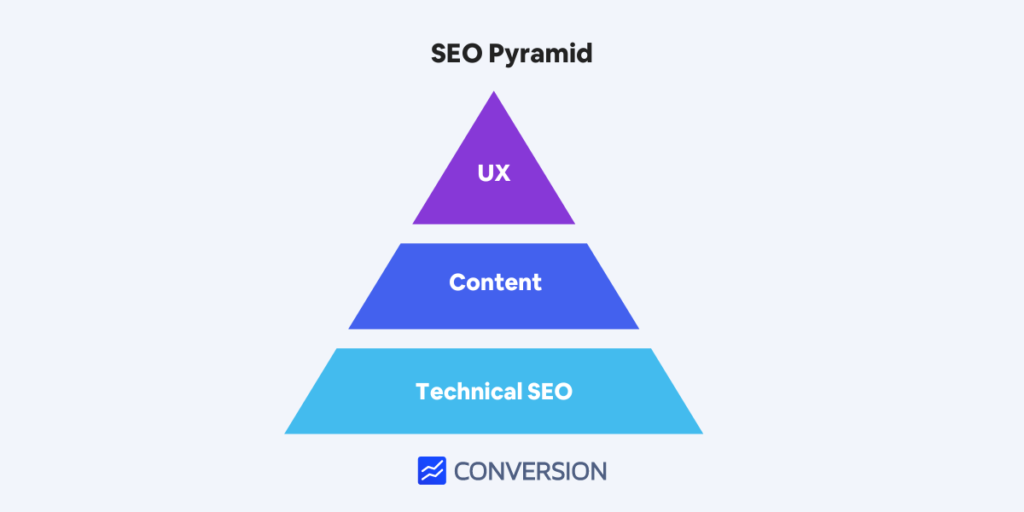
We will detail each of these aspects below.
Technical SEO: the base of the pyramid
At the base of the pyramid we have Technical SEO , responsible for the internal improvements of the site.
And why is Technical SEO so important?
Because he is the one who guarantees the site’s indexability , that is, it allows Googlebot to find it and guarantees that the index will understand it.
That, of course, as long as your structure is technically appropriate.
Technical SEO is closely linked to what we call On-Page SEO, the SEO front responsible for filling this technical structure with content and information aimed at a better browsing experience.
But going back to Technical SEO, it is important to keep in mind that technical errors will always exist and need to be fixed frequently .
Tip : Set a certain time period to do a full audit. Depending on the needs of the site, this audit can be done every week, monthly or every three months.
To improve your website’s Technical SEO, pay attention to these main points of attention:
Friendly URLs
The URL of a page is not just an e-mail address.
It also communicates to its user and Google’s algorithm what the main subject of this page is, as well as providing additional information about the site’s structure, thus resembling a breadcrumb .
For this structure to be understandable, use clear words, avoid codes and special characters and don’t forget about the SSL protocol , which gives your visitor security.
Title and meta description
The good use of these tags is essential for anyone who wants not only to help Googlebot better understand their site, but also to increase their CTR on the results page.
That’s because it’s this information that will be displayed on the SERP, which makes it your business card.
Conquer your user with an attractive and complete title and description.
Heading tags
The technical hierarchy of the content helps the crawler to understand more clearly what the subject is covered by a page, that’s why the H1, H2, H3 and other markers are so important within the code of a page.
The H1 is the most indispensable tag, because it corresponds to the title of a piece of content.
Below, the H2 is the subheading. The H3, smaller titles that are inserted inside the H2 and so on.
These tags range from H1 to H6, with H1 being the most relevant and H6 the least relevant.
Images
Some precautions that we can take when uploading images in an e-commerce are to always keep their sizes below 100kb and include the descriptive alt tag .
structured data
Schema.org structured data is as necessary for search engines as it is for users.
They are responsible for displaying the rich snippets on the SERP and also for providing detailed information about your business to Googlebot.
As well as titles and meta descriptions, they also complement your business card and provide more complete information to your visitor on their first contact with your store.
Loading speed: Core Web Vitals
These new evaluation criteria, which arrived together with the Google Page Experience update in June of this year, basically deal with the loading speed of websites.
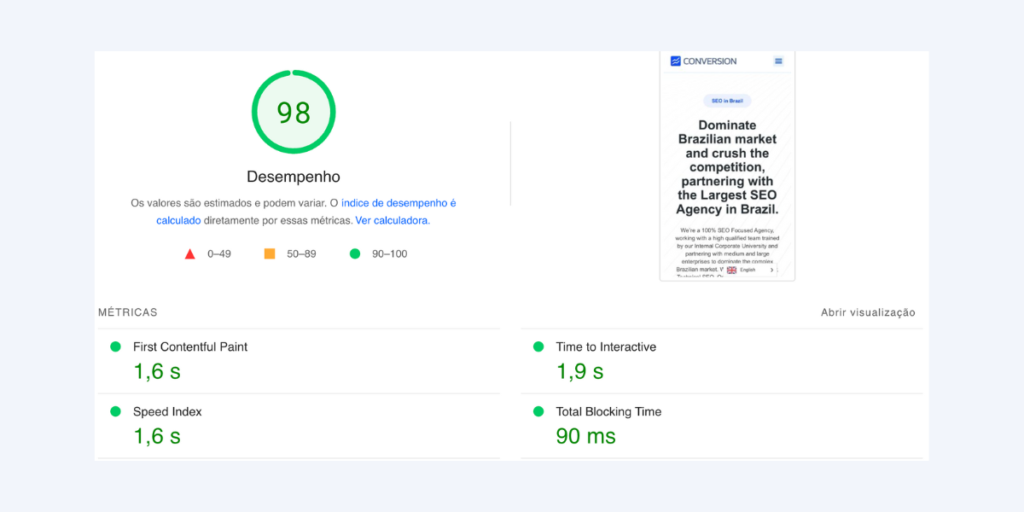
The LCP, CLS and FID parameters are now essential ranking factors and it is very important that you keep your grades within the stipulated as reasonable by Google.
- LCP (Largest Contentful Paint) below 2.5 seconds;
- CLS (Cumulated Layout Shift) below 0.1;
- FID (First Input Delay) below 100 ms.
Sitemap.xml
Your site ‘s sitemap.xml is a file (or more than one) that contains all the URLs for this site.
In other words, it’s a map that the search engine’s crawler will go through if your site’s Technical SEO isn’t completely round. Its function is to help the robots.
Canonicals
This tag is included in the “official” versions of a website’s pages, those that must be indexed by the search engine.
For example: when accessing a product page and filtering the results, a user will generate a new URL, full of different parameters, for the same page.
The canonical tag will prevent Google from indexing both versions.
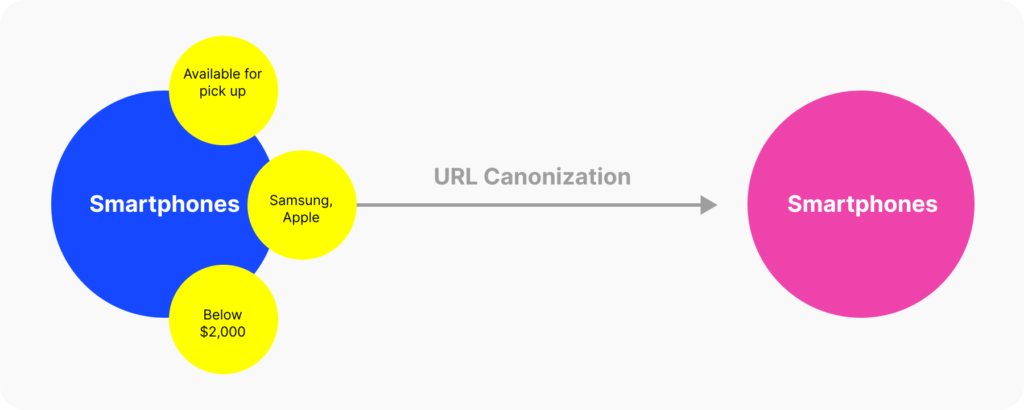
Center of the pyramid: the content
If you’re not exactly new to the SEO world, you’ve probably heard the saying: content is king.
This statement remains true and, most likely, will remain valid for many years to come.
Although Technical SEO is the base of the pyramid for allowing your site to be indexed by Google, it is through the content that your user will be attracted and involved by your store.
Here at Conversion, however, we defend that the secret of good content for e-commerce lies in uniting two basic commercial actions: selling by informing. Or inform selling.
However, your content must not only be good, that is, distribute quality information, but provide a positive experience for your user and influence their thinking, then or later.
When we talk about e-commerce , we understand that this content must be able to create desires and consolidate a purchase intention in your potential consumer.
The most common types of content we develop in SEO for e-commerce are:
Product Description
On a Product Page, describe your products so well that your user will have no doubts about what he wants to buy.
Develop original and detailed text. Research the main questions of your target audience and answer them all.
A good description content can be the point that will differentiate your e-commerce from the competing brand, so be careful.
Don’t forget, of course, to include your main keywords in this description so that Google can also index it.
Remember that there must be a balance between meeting the requirements of the users and meeting the requirements of the robot, and both must be satisfied.
Support texts
A little different from descriptions, supporting texts are those present on the side, top or footer of a product or category page, and are great examples of content that also help the consumer.
multimedia content
If your e-commerce sells clothes, for example, consider including a short video of a model using the pieces.
This will help the public to have a greater perception of fit, proportions and colors: fundamental information when buying a garment.
In the case of other types of products, videos on how to use and assembly tips are also great examples of multimedia content that will put your e-commerce ahead of your competitors.
Assessments
According to the 2020 Digital Consumer Survey (in Brazil), 96.2% of online shoppers review reviews from other shoppers before making a purchase.
In addition, 53.2% of them consider the opinion of other customers to be important for a good shopping experience.
Therefore, encourage your buyers to review your e-commerce and incorporate these reviews into your content, displaying them on your pages and making them great allies when it comes to winning over new customers.
Content Marketing
The so-called content marketing will not always be ideal for e-commerces, especially if it only sells price. However, if it is a brand that wants to create value for the consumer or even position itself (in the case of an industry selling directly to the consumer), investing in content marketing is a good idea.
Web Stories: a new content format
Web Stories are cards in the format of stories, similar to Instagram, which generate a lot of interactivity mainly through mobile devices. It’s still something new, but if you want to innovate, it’s worth a try.
Evaluation metrics
Some important evaluation metrics to measure the receptivity of your content are:
- Traffic (recurrence of users)
- bounce rate
- Average time on page
- scroll heat map
- sharing / interaction
UX – User Experience: The Top of the Pyramid
With the full implementation of Google Page Experience , a major Google update that brought UX as a new ranking factor, talking about user experience gained a new dimension.
Offering your user a satisfying online shopping experience is a crucial point for them to return to your site.
A good UX within an e-commerce can be the difference between a bad review and a second purchase, so this is a fundamental aspect of your SEO strategy.
According to Google’s new quality guidelines, a user experience is considered good when:
- A website is mobile-friendly , that is, it adapts perfectly to the small screens of mobile devices, such as smartphones;
- Page load time is under 2.5 seconds ;
- The response time for a user action is up to 100 milliseconds ;
- A page does not have pop-ups that “jump out” to the user;
- There are no intrusive ads or ads that get in the way of reading and viewing the main content;
- The site has HTTPS in its URL, that is: safe browsing ;
- Get good grades on all Core Web Vitals .
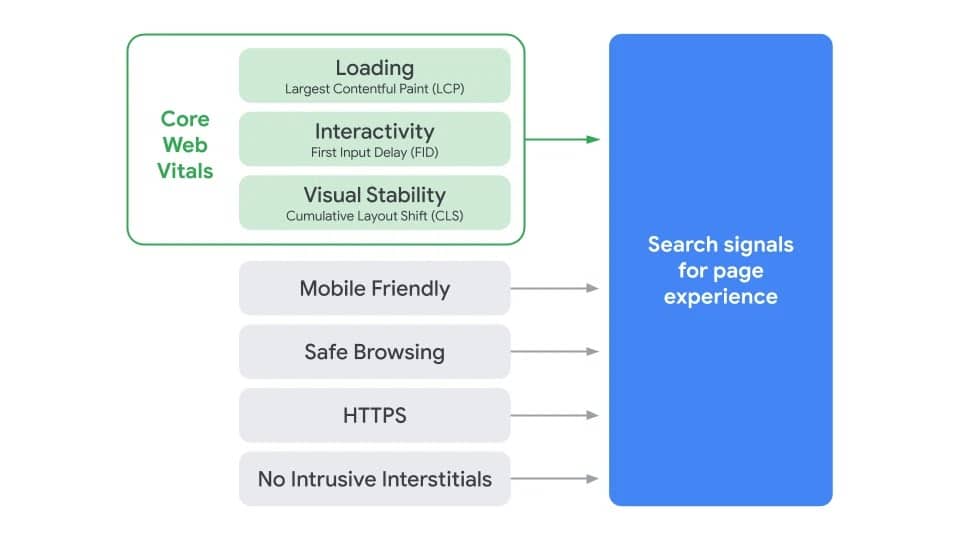
Advanced optimization aspects
In addition to all the elements mentioned above present in the SEO pyramid, there are other important points to consider when optimizing a website.
The main ones are:
Link building
The acquisition of quality backlinks is closely related to the authority of a site, since a site has good domain authority when it is referenced by other sites that also have a good DA.
According to our eCommerce SEO study (in Brazil), the average first page domain authority on Google is 70!
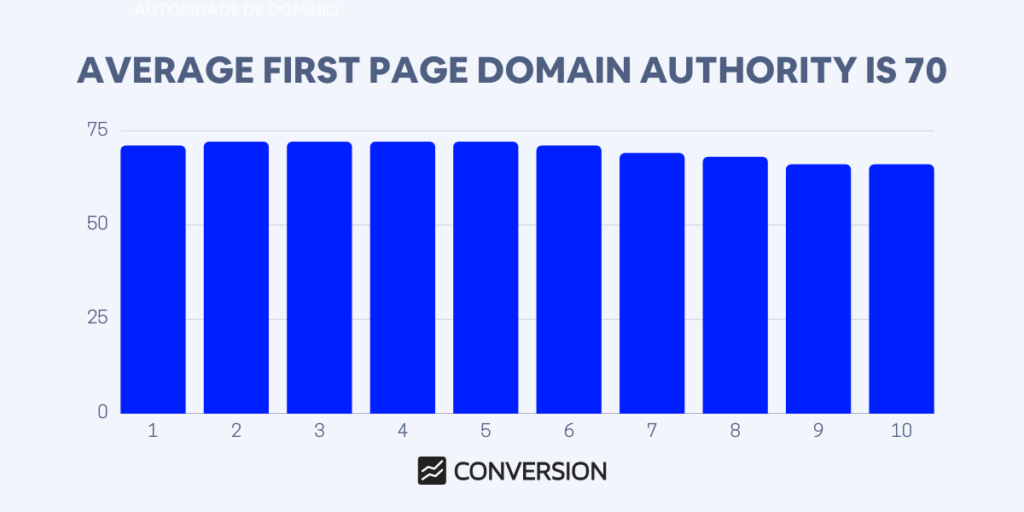
To conquer links, however, there are no easy ways. And that’s why your results are so relevant.
Here at Conversion, we were pioneers in the practice of link building with press relations , or Link Buidling 4.0 : the practice of gaining links through the distribution of relevant content aimed at press vehicles.
It was even this concept that gave rise to what we now call Data-Driven PR : the data-oriented press office focused on acquiring backlinks.
Information Architecture
When we access an e-commerce, we instinctively access its menu expecting to find an organized and hierarchical structure that we know well.
This structure is divided into Home > Department > Category > Subcategory (if any) > Product.
Technically, this organization does not only serve to guide the user within the site, although it is fundamental. It also works as a kind of internal linking and is extremely efficient.
It is from a good information architecture that Googlebot is able to understand how these pages are interconnected and make sense between them.
In addition, this structure helps the robot to “walk” through your e-commerce more fluidly, following your links and visiting your pages in order of importance.
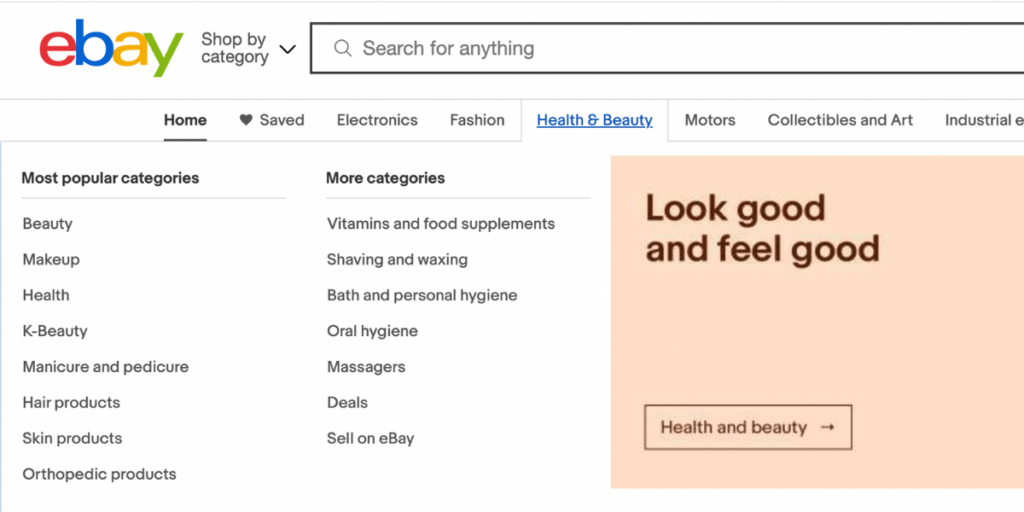
Search Intent: Be the best answer to what people are looking for
Understanding your user’s search intent is one of the key points for your e-commerce SEO strategy to achieve great results.
In a nutshell, search intent is the purpose behind a Google query .
That is: the intent of each search is what your user wants to find when doing a search on a search engine.
Because it is in the mind of the researcher, this intention reflects a certain personal subjectivity and can serve a wide range of purposes .
Therefore, the most efficient way to match as many intents as possible is to optimize your e-commerce for all the statistically most representative intents.
Since a single keyword can serve dozens of different purposes, organize your information and produce comprehensive — and complete!
In this way, you will be closer to reaching the largest share of your target audience.
Tip : Analyze the results displayed on the SERP for the top keywords for your business. The best positioned pages are those that best match the search intents related to those terms.
Think results that please Greeks and Trojans
When searching for the word [MacBook Pro] , for example, a user might have the purpose of buying a new computer (commercial intent).
Another user, however, when doing the same search, may have the simple intention of finding a blog with information about MacBooks because he has just acquired one (informational intention).
The goal of the maneuver of covering different intentions is to make your content reach as many people as possible. That is, to democratize the information provided .
Now that you also know what user search intent is , let’s talk about the top SEO mistakes for e-commerce and how to avoid them.
Top SEO Mistakes for Ecommerce
When optimizing your website, it is essential to know what to do, but it is also very important to know what not to do.
So stay tuned for the errors that we will cite below and avoid them at all costs!
duplicate content
Even if your e-commerce is a reseller, it is important that all your content is original and developed exclusively for your store.
When we talk about ranking, this aspect is also significant, because Google will always prioritize unique and unpublished content.
broken links
As we said a little above, it is also through internal linking that the Google robot visits all the pages of a website.
If some links on this site are broken, that is, they are not working perfectly, this may temporarily compromise the crawler’s passage.
It is also common for some content and pages to cease to exist over time, turning into pages with a 404 error or unsuccessful redirects.
So that neither the user nor the Googlebot has access to these pages, it is necessary to correct them whenever the occasion arises, in addition to making constant scans to identify them as soon as possible.
purchase of links
As repetitive as the recommendation of not buying or exchanging links has become , unfortunately there is still a lot of this practice in the SEO universe.
Buying or exchanging links is strongly condemned by Google and is considered algorithmic manipulation , so it can trigger serious punishments when identified, including SERP bans.
useful tools
To start optimizing your e-commerce, just knowing what you need to do is not enough: you need to get your hands dirty!
And for that, some tools are extremely necessary, since it is impossible to audit a website or do a keyword research manually.
Below, we will list the most popular and efficient SEO tools on the market to help you put your best SEO strategy for e-commerce into practice.
Come on?
Google Search Console
Free and offered by Google itself, the GSC, formerly Webmaster Tools, is a fundamental tool for analyzing the technical aspects of a website.
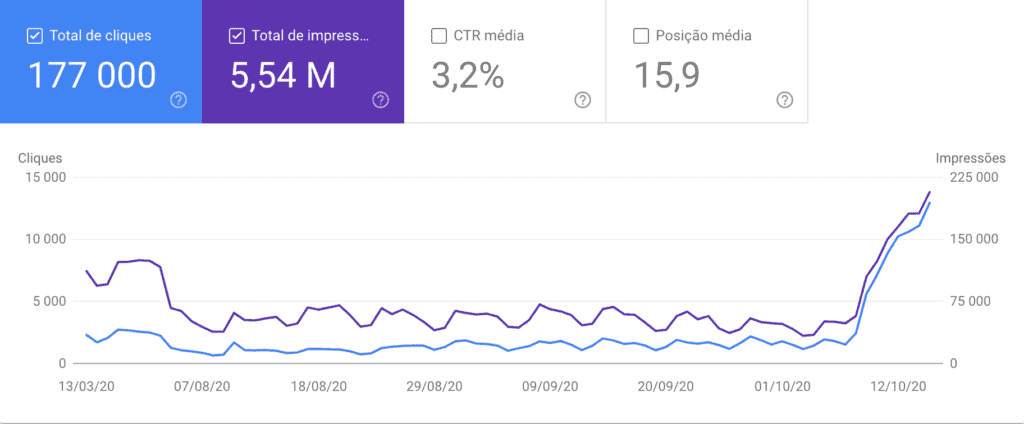
It provides data such as organic performance reporting, mobile responsiveness testing, error diagnosis and others.
Google Analytics
Even more popular than its Search Console relative, Analytics is Google’s favorite free tool.
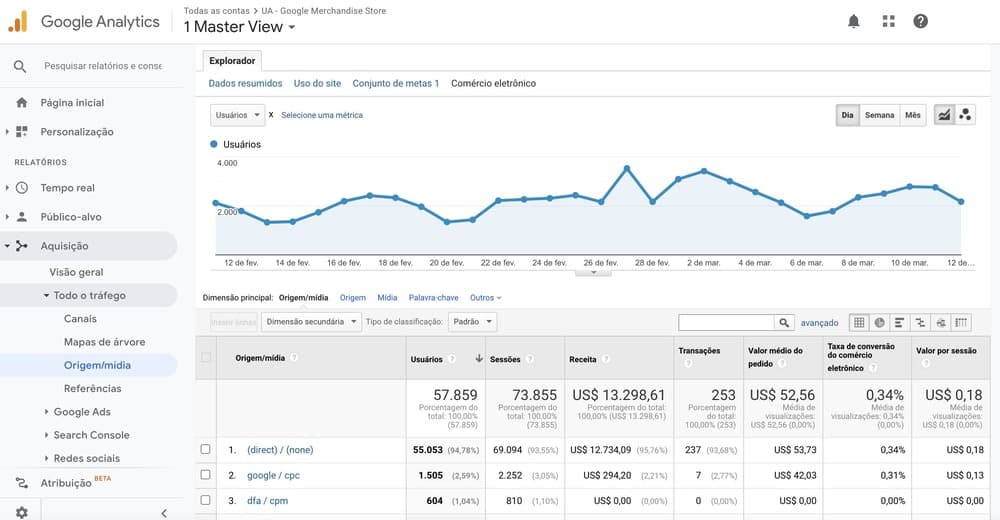
That’s because it doesn’t just satisfy SEO professionals, but it brings relevant data to any website owners, such as visitor demographics, most visited pages, average session time and the possibility to compare different periods.
Google Data Studio
The differential of this tool is the possibility of creating a personalized analysis dashboard.
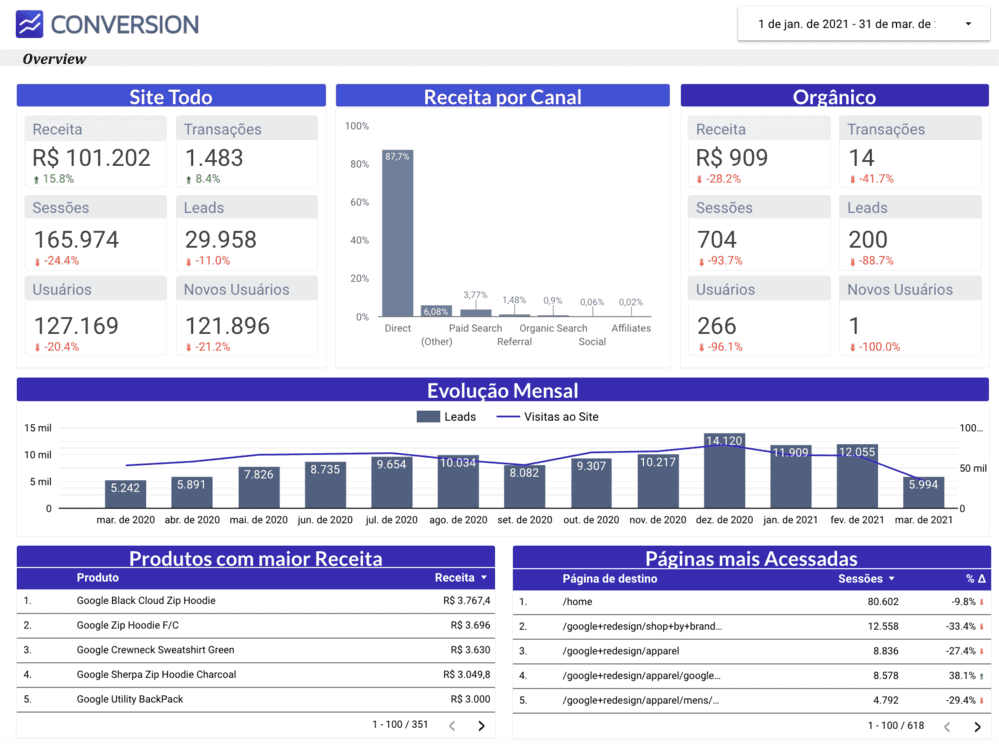
Ubersuggest
Created by consulting firm Neil Patel BR, Ubersuggest is a free tool that offers keyword ideas, domain overview, search volume, traffic and other important information for beginners.
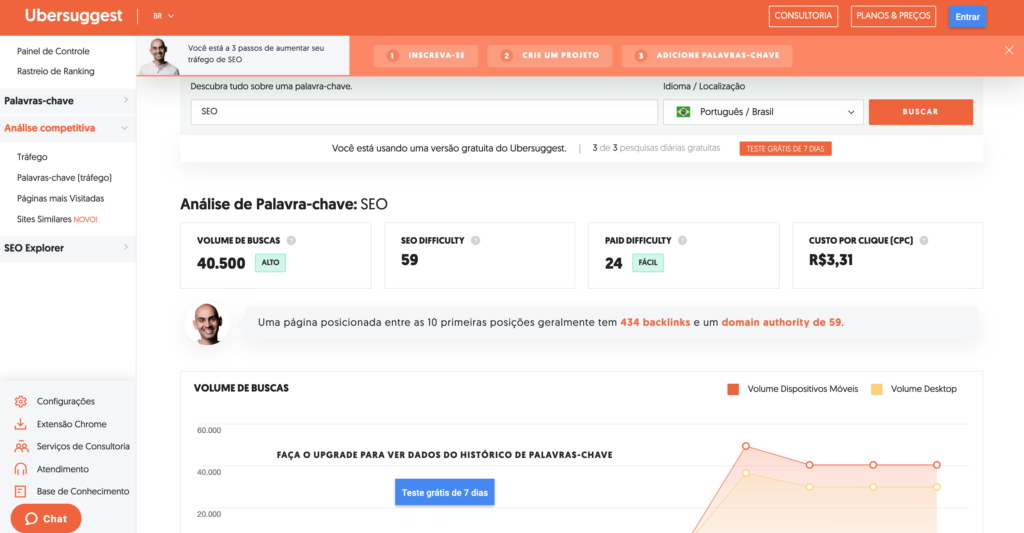
There is the option to hire a paid plan and expand some features.
Semrush
One of the most popular and most complete tools in the world market, Semrush brings, in addition to general domain data, information about backlinks, keywords, traffic and specific reports on aspects such as local SEO, social networks and content markerting.
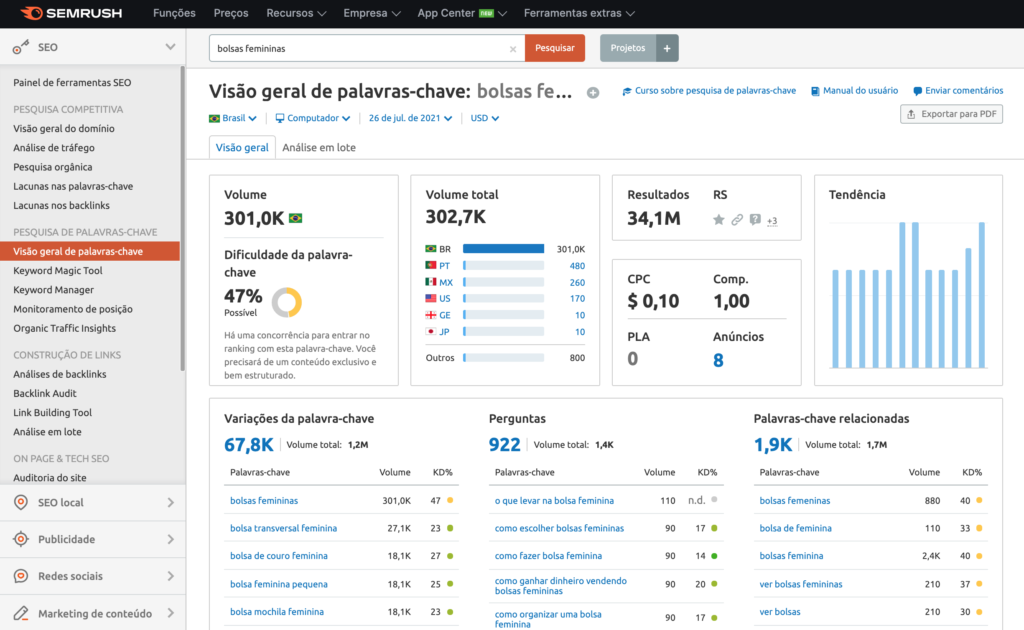
Ahrefs
Like Semrush, Ahrefs is also a very complex tool and extremely popular in the community.
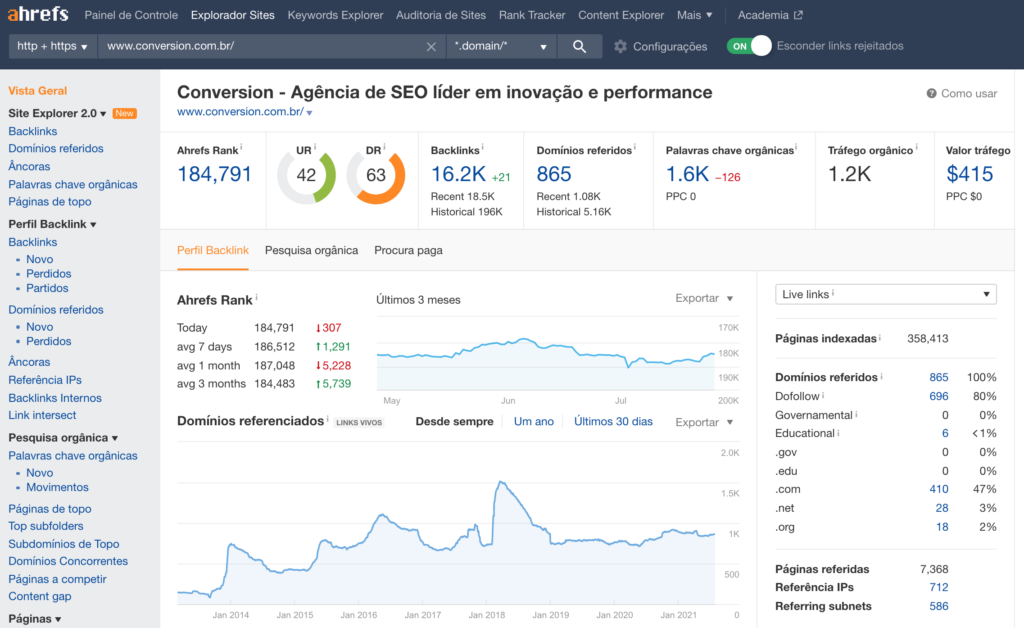
It is essential for anyone who wants to do in-depth analysis of backlinks and competitors.
Screaming frog
This tool simulates the Google robot and performs a complete audit on the sites, generating very relevant data when identifying technical failures.
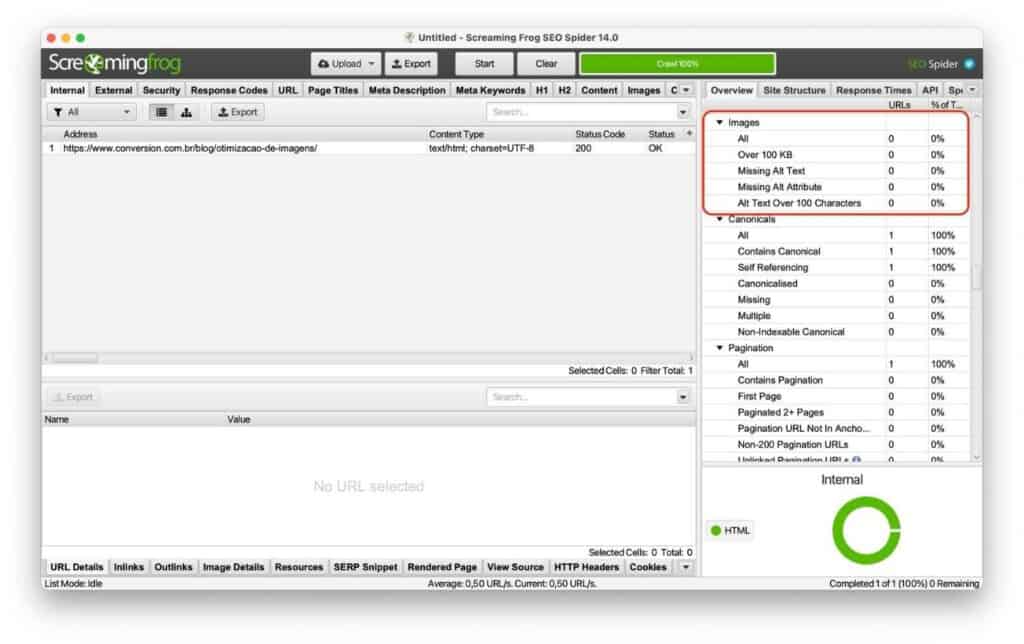
Pingdom
This tool analyzes the loading speed of a page and even offers the possibility to compare it with its competitors.
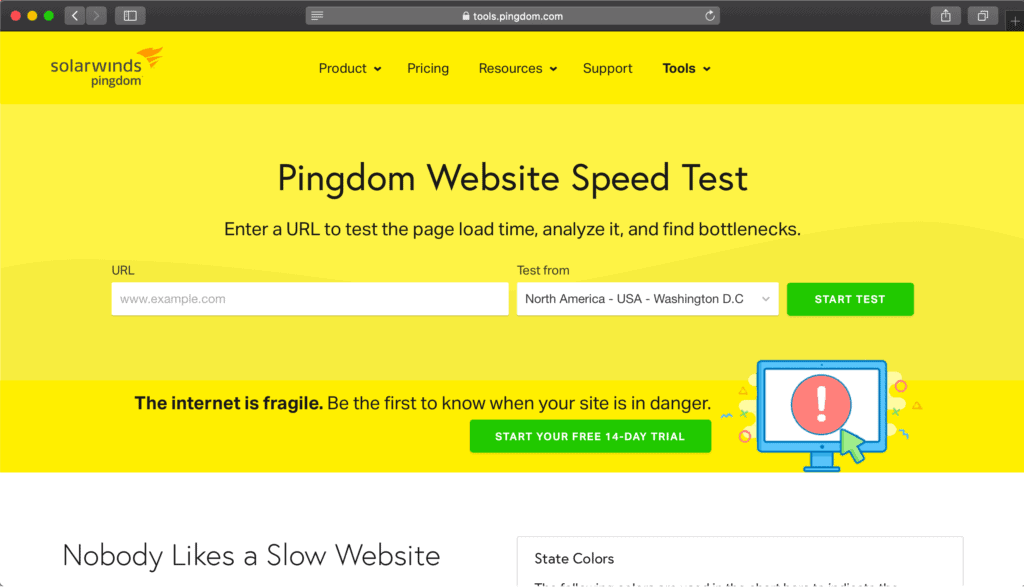
In addition, Pingdom provides data on what needs to be fixed so that your website speed can be boosted.
Conclusion
Despite the many different ways to implement and execute a successful strategy, it is always crucial to remember that SEO is not a one-off job, but an ongoing process that will continue to renew itself as long as your e-commerce exists.
That’s why staying up to date with the latest Google updates and staying informed about new techniques is a very important part of the job.
We hope the tips above unlock your e-commerce’s organic search potential and take your business experience to a new level of quality.
And, if you have any other tips, write to us in the comments below!
